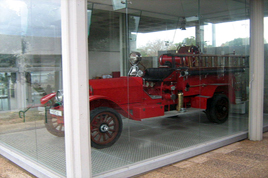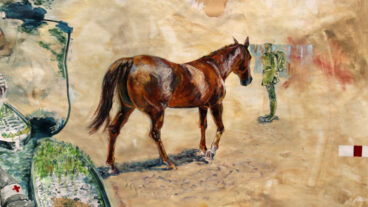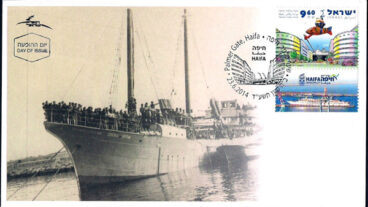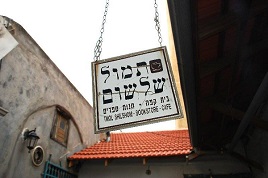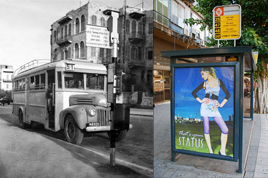Last night was Lag Ba Omer. Although in fact a minor holiday it has, in the modern Israeli mentality, become as closely associated with bonfires and barbecue as has Yom Kippur with riding bicycles in the middle of the highway.
Succinctly put, Lag Ba Omer is the night we set the whole country on fire — literally. And because it fell on a Saturday night, meaning that observant Jews would not have enough time to really get a good blaze going, the whole bonfire thing was give an extra day’s grace. So, the conflagration continues tonight, under the watchful eye of the Israel Fire & Rescue Services.
This presents an excellent opportunity to review the lamentable history of firefighting in Israel’s early days. In a nutshell: things have only improved.
According to an online essay by Lior Tehrani, in April 1920, the British military governor put in a request with the Tel Aviv city council for the establishment of a fire brigade in Tel Aviv. “Only five years later, after several large fires broke out in Jaffa and Tel Aviv, did the committee initiate a brigade of volunteers for whom the subject was close to their hearts.” (Many of the first volunteers had been victims of a massive flood in the Brenner neighborhood). The initial volunteer fire brigade numbered 73 men. 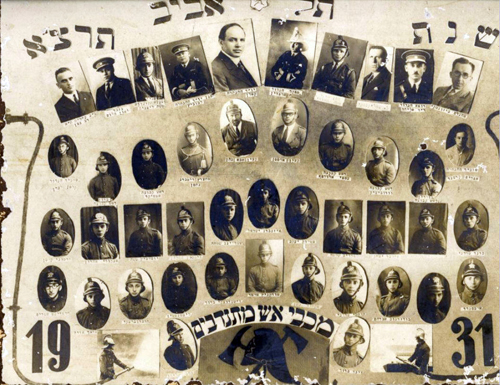 Brigade founder Abba Cohen had been an volunteer firefighter officer in Czarist Russia. “Cohen believed that the city that without a firefighters brigade was like a house without a roof so he turned to then-mayor, Meir Dizengoff, with letter of request to establish such an institution… and went on to devote many years of his life to establishing and advancing fire fighting doctrine.”
Brigade founder Abba Cohen had been an volunteer firefighter officer in Czarist Russia. “Cohen believed that the city that without a firefighters brigade was like a house without a roof so he turned to then-mayor, Meir Dizengoff, with letter of request to establish such an institution… and went on to devote many years of his life to establishing and advancing fire fighting doctrine.”
“Once recruited and after undergoing appropriate medical examinations, the 73 volunteers received training. Exercises were held in the school building in Neve Tzedek. The trainers were Zalman and Elijah, the sons of Abba Cohen, and the instructors in the subject of firefighting were Abba Cohen and Moshe ‘The Carter’ Tabori, who was also a former firefighter officer in the old country.” 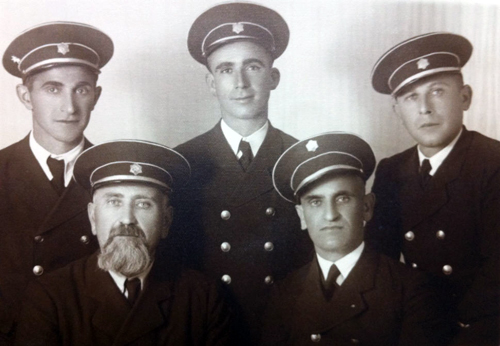 As the Tel Aviv Municipal website has it, on September 1, 1925,the Council announced the establishment of municipal fire brigade. At first, the fire station was housed in a small hut next to the Water Institute on Rothschild Boulevard. In 1928, the municipality provided land adjacent to the water tower for practice training and allotted the Brigade a room underneath the water tower.
As the Tel Aviv Municipal website has it, on September 1, 1925,the Council announced the establishment of municipal fire brigade. At first, the fire station was housed in a small hut next to the Water Institute on Rothschild Boulevard. In 1928, the municipality provided land adjacent to the water tower for practice training and allotted the Brigade a room underneath the water tower.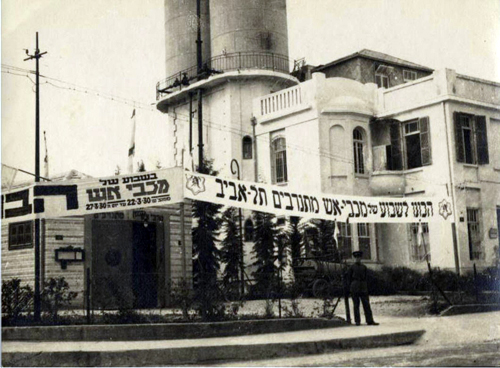 “In the first years of their existence, the firefighters worked on a voluntary basis, and the funds and equipment at their disposal were limited. They tried to raise donations with banquets and movie theater fundraisers. The municipality gave the fire department a vehicle and tried to collect taxes on theater shows and movies but that was only a partial solution as some cinema halls and theaters agreed to pay and others did not.”
“In the first years of their existence, the firefighters worked on a voluntary basis, and the funds and equipment at their disposal were limited. They tried to raise donations with banquets and movie theater fundraisers. The municipality gave the fire department a vehicle and tried to collect taxes on theater shows and movies but that was only a partial solution as some cinema halls and theaters agreed to pay and others did not.”
“In 1927-1928, the economic crisis in the country worsened the situation of the volunteer fire department. 30 out of 60 members of the battalion at the time, were unemployed… The poverty situation is illustrated by a letter from Mayor David Bloch, informing [the firefighters] that the municipality had turned down their for a barrel to serve as a fire hydrant. Following the city council’s rejection of a request to allocate 20 lira to purchase a rubber hose, the fire fighters approached the press and announced that in this situation, they could not to respond properly to fires.”
The memo rejecting the procurement is below, right. 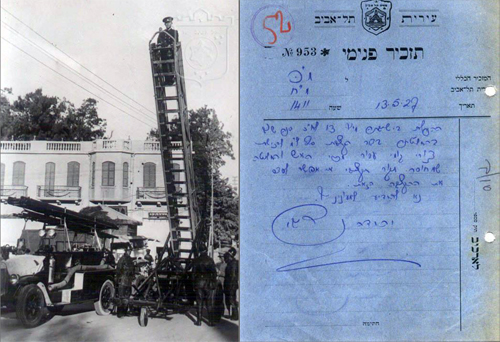 In 1927, a government committee examined the possibility of establishing a joint fire brigade Jaffa and Tel Aviv but the idea reached a dead end. The main turning point was in August 26, 1928 when the volunteer fire department received official recognition and an annual budget of 100 lira (this was subsequently cut to 50 lira).
In 1927, a government committee examined the possibility of establishing a joint fire brigade Jaffa and Tel Aviv but the idea reached a dead end. The main turning point was in August 26, 1928 when the volunteer fire department received official recognition and an annual budget of 100 lira (this was subsequently cut to 50 lira).
In 1930, after Tel Aviv suffered a series of fires, Mayor Meir Dizengoff admitted that the municipality did not take the issue seriously enough. A fire truck was purchased from the International Company and German-manufactured sirens were purchased and installed on the Water Institute roof. In 1935, the brigade purchased a sophisticated British-made fire truck with pump and foam generator. It was dubbed the “Meira” in honor of Meir Dizengoff.
The Mayor is pictured below on a visit to the Fire Station in 1930. 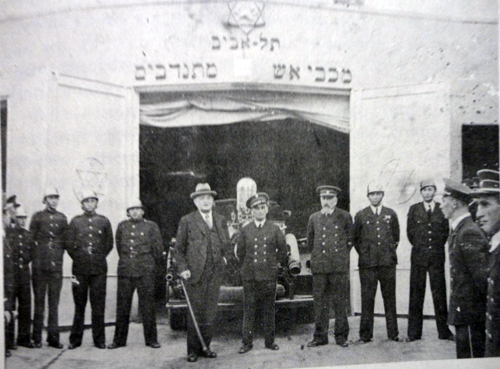 During World War II, in 1942, Tel Aviv suffered another wave of fires along with a bombing raid by the Italian Royal Air Force. A new fire station on Basel Street was built soon afterwards.
During World War II, in 1942, Tel Aviv suffered another wave of fires along with a bombing raid by the Italian Royal Air Force. A new fire station on Basel Street was built soon afterwards.
I recall walking by the fire station on Basel Street in Tel Aviv and noticing an grotty old firetruck rusting — where else? — on the roof of the building. It turns out that the old wreck was, in fact, a historic relic, a product of the American La France Fire Engine Co. of Elmira, New York. Manufactured in 1925, it was given as a gift to the Tel Aviv Volunteer Fire Brigade by the City of New York. On August 6, 1948 the fire engine arrived at the then-new Basel Street fire station where it was in service until 1960.
During the Sixties and Seventies, the fire truck was on display at a museum dedicated to “Science and Technics”. In the Eighties, it reverted back to the Basel Street station (this must have been when I saw it on the roof). After the station was demolished to make way for a luxury apartment building complex, the remains were transferred to the care — or lack thereof — of the Ayalon Highway Company. These were eventually discovered in early 2000 and, after original plans were obtained and original parts purchased, the truck was lovingly restored by the Eretz Israel Museum where it now stands. 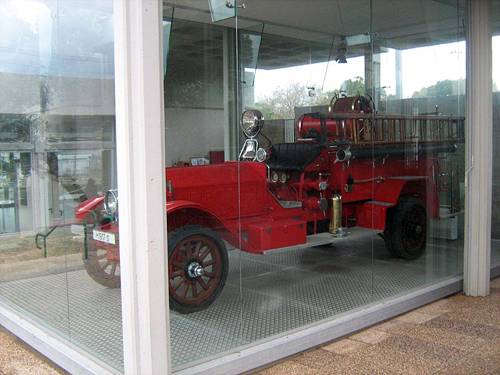 Images courtesy of Wikipedia, Tel Aviv Municipal website and Tel Aviv 100 – the Municipal Encyclopedia.
Images courtesy of Wikipedia, Tel Aviv Municipal website and Tel Aviv 100 – the Municipal Encyclopedia.




